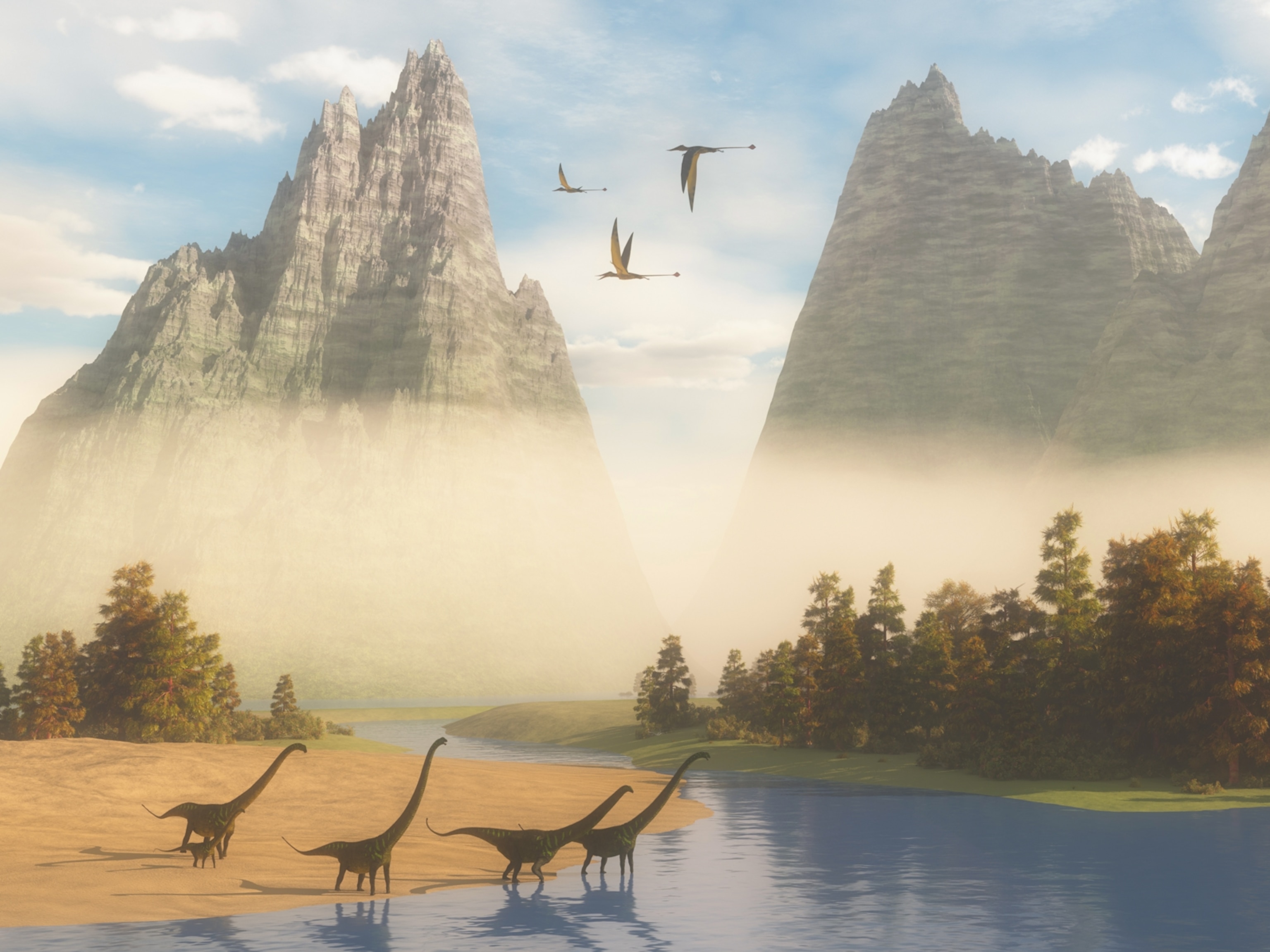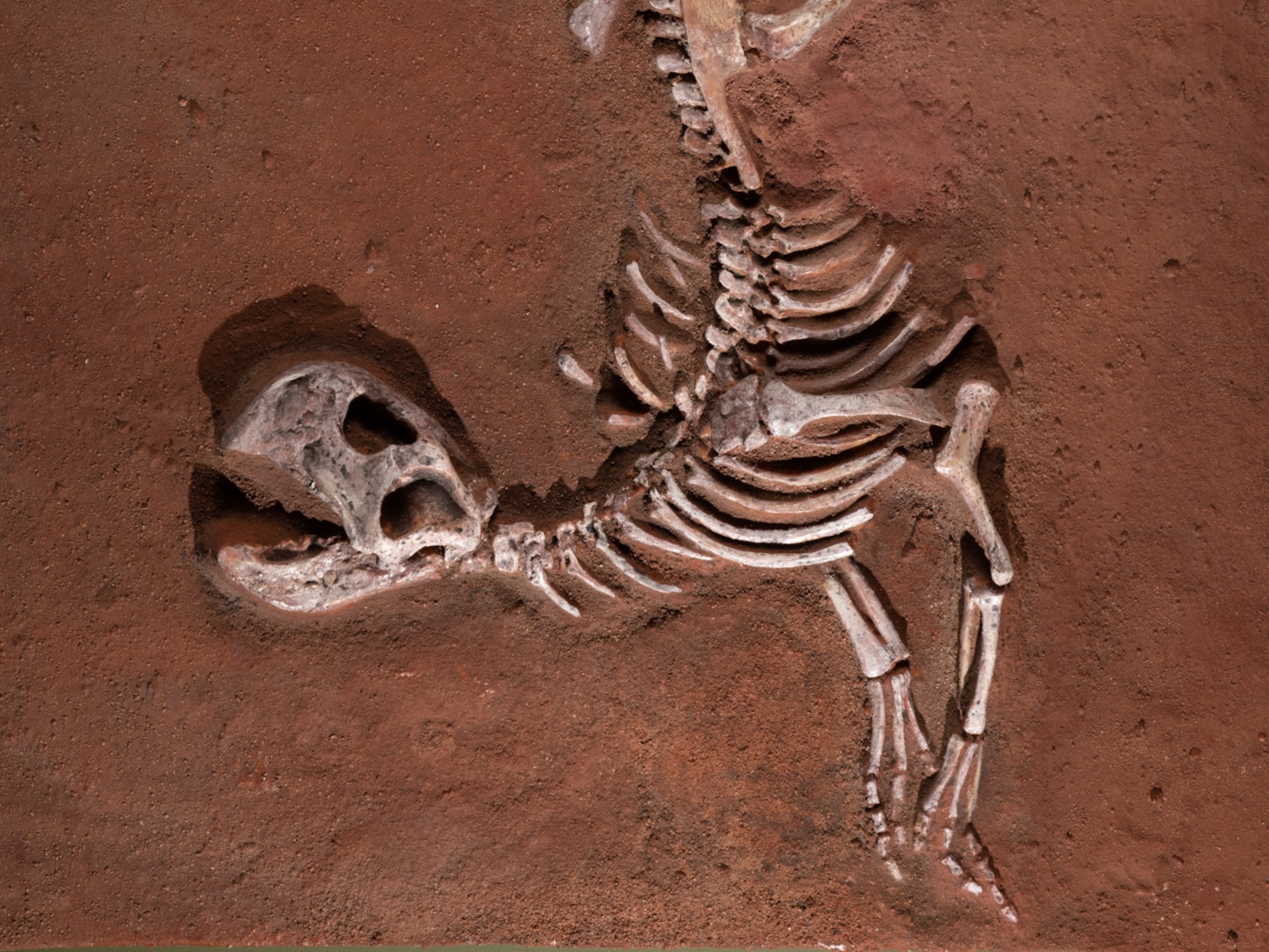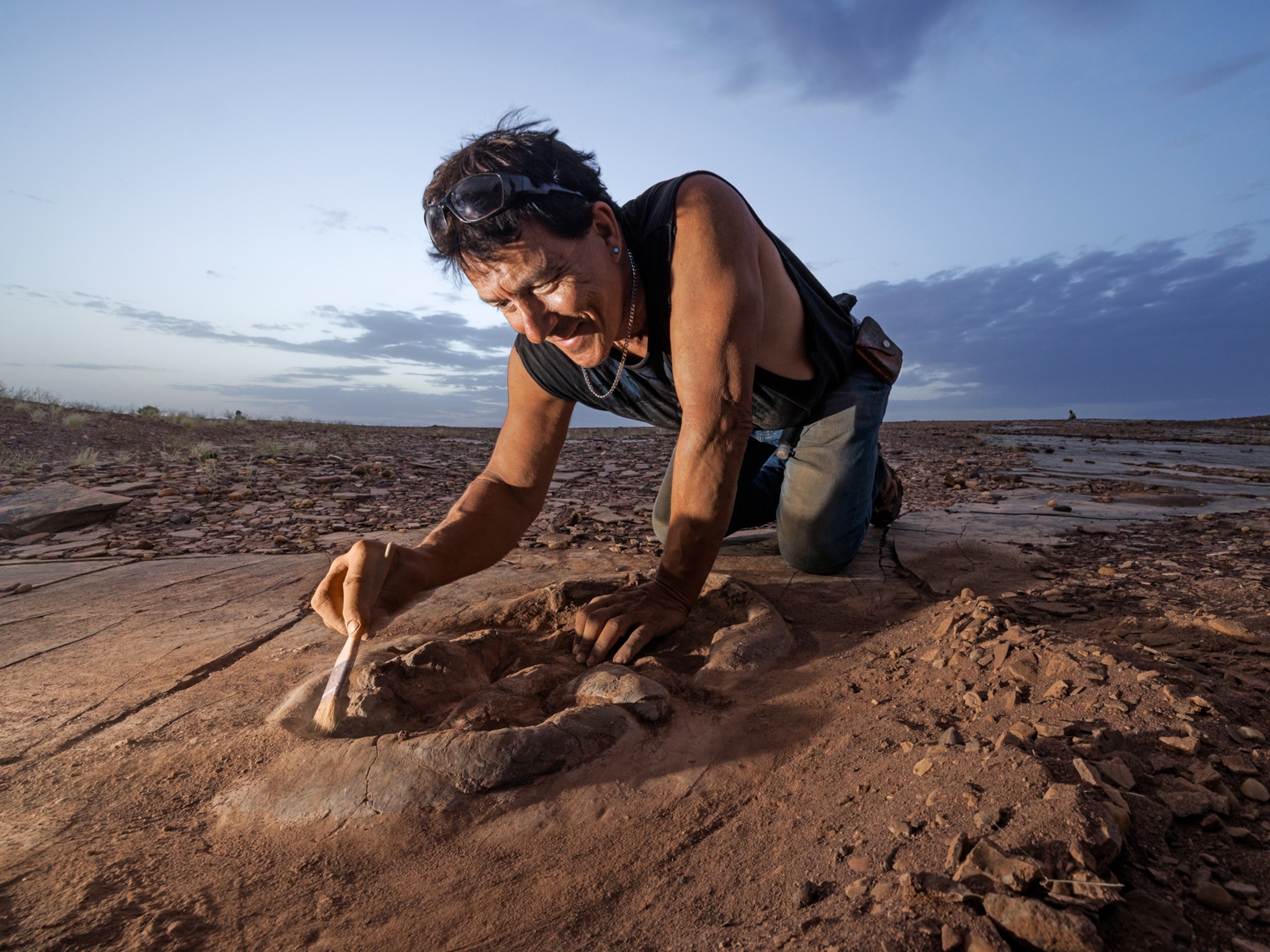Dinosaur-Era Bird Found With Shockingly Intact Skull
The unprecedented Ichthyornis fossil from Kansas offers fresh perspective on bird evolution.
A delicate but remarkably well-preserved fossil skull is providing new clues to how birds evolved from their dinosaur ancestors.
The first known fossil of the ancient bird Ichthyornis was unearthed in 1870 in Kansas, under the direction of legendary fossil-hunter Othniel Charles Marsh. The species hails from a time in the Cretaceous period, between 100 and 66 million years ago, when birds were in the process of losing many of the traits inherited from their dinosaur forebears and evolving into the winged, feathered creatures we know today. (See a Cretaceous baby bird found preserved in amber.)
While many stunning specimens of Cretaceous birds have been found in China, these fossils are often compressed almost flat, leaving researchers guessing at the original shape of the skulls. And until now, none of the hundred or so specimens of Ichthyornis have included decent skulls, leaving a gap in our understanding of how the avian head evolved.
Now, paleontologists have unveiled an extraordinary Ichthyornis skull, along with three partial cranial fossils—the first new skulls of the species to be described in 148 years.
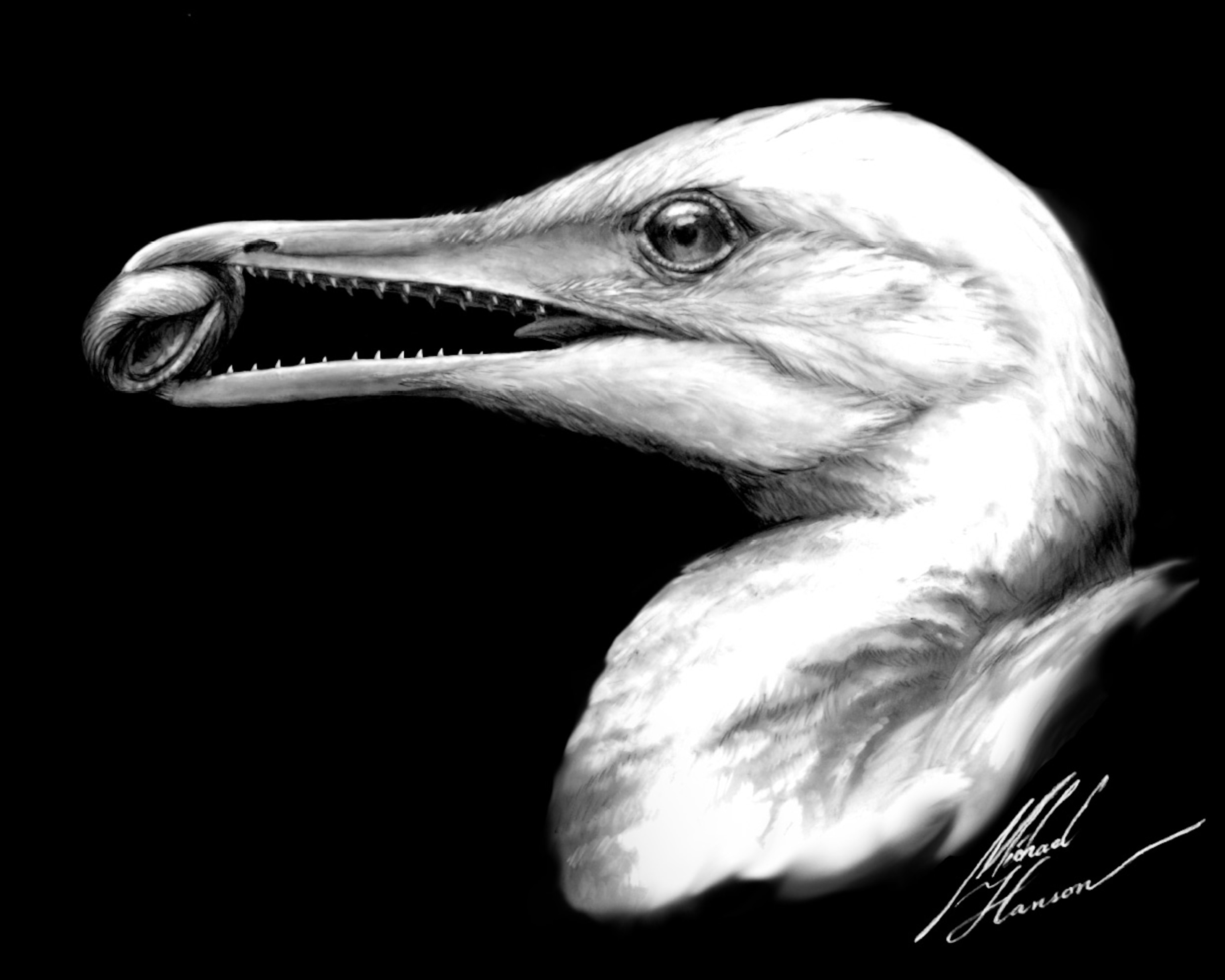
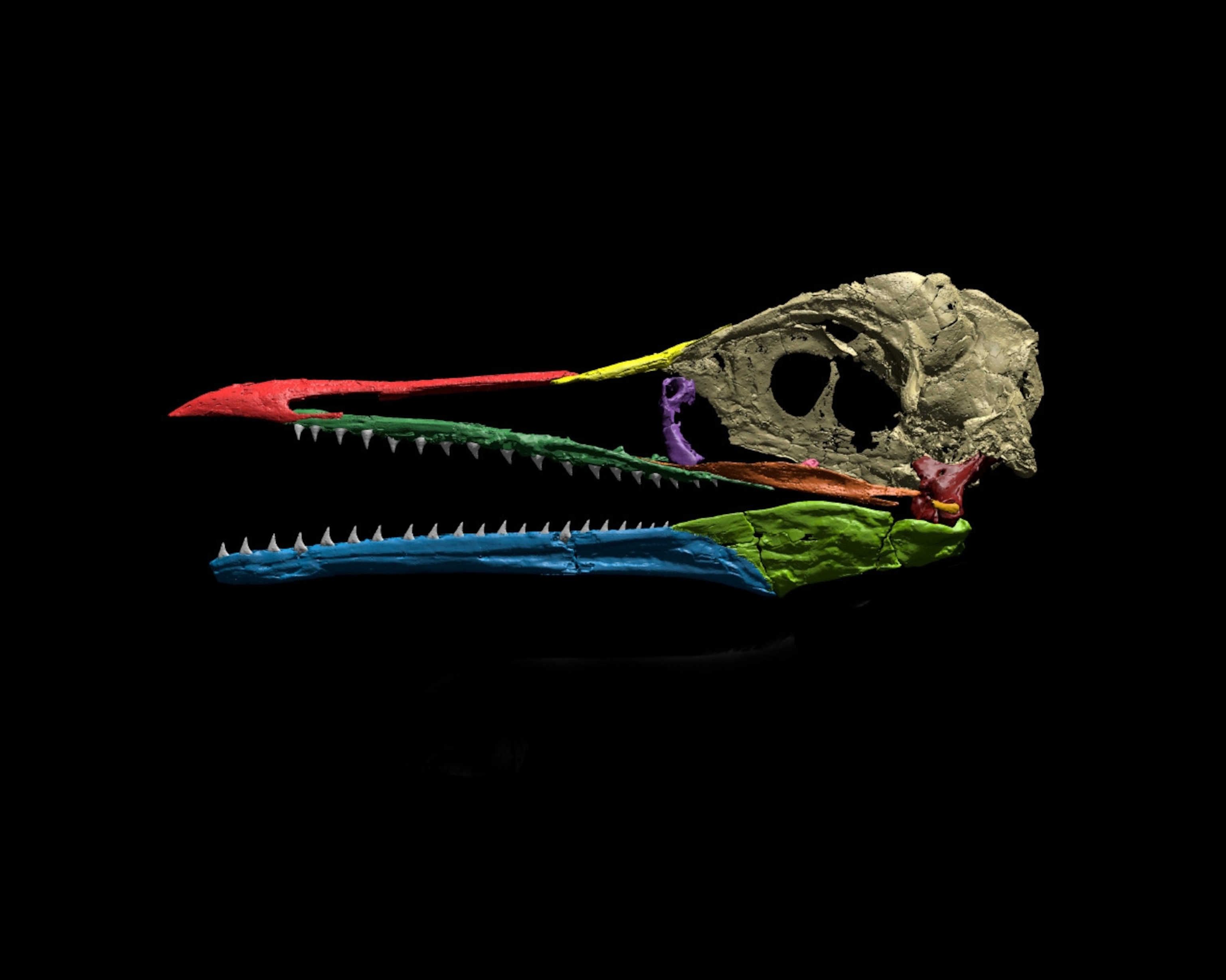
“Bird skulls are at a real premium among paleontologists, as they don’t get preserved in most circumstances,” says study leader Daniel Field of the University of Bath in the U.K.
Some of the newfound specimens remain embedded in rock, but by CT-scanning the fossils and combining the results, Field and coauthor Bhart-Anjan Bhullar of Yale University created an almost complete 3-D digital reconstruction of an Ichthyornis skull, which they reveal today in the journal Nature.
“The application of new technology really has the ability to revolutionize paleontology,” says Jingmai O’Connor, an expert on early birds at the Institute of Vertebrate Paleontology and Paleoanthropology in Beijing, China. (Here’s how advanced x-ray scanning is helping us find out whether the famous bird-like dinosaur Archaeopteryx could fly.)
“Now, with greater knowledge, these scientists are showing us just how bizarre the skull of Ichthyornis really was, with an odd combination of derived and primitive features, but many more primitive features than we’d expect.”
Toothy Fish-Eater
Fort Hays State University undergraduate Kris Super found the new Ichthyornis specimen in 2014, unearthing it from the 82- to 87-million-year-old-rocks of Kansas’s Niobrara Chalk. Study coauthor David Burnham, a paleontologist at the University of Kansas in Lawrence, then sent photos of the find to Field, who quickly realized that the relatively complete skeleton and skull was a very unusual discovery.
The digitally reconstructed skull showcases surprisingly modern and surprisingly primitive features, Field says. Modern bird skulls are lightweight, with long, toothless snouts sheathed with beaks of keratin. They also have enlarged braincases, a different arrangement of bones in their palates, and much-reduced musculature related to closing the jaw and chomping down with violent force.
By contrast, the toothed upper jaw in Ichthyornis “is very large, and comparable to what you see in a dinosaur like Velociraptor,” Field says. The beak is present, but only on the very tip of the snout. Ichthyornis also retains primitive openings in the roof of the skull that, in dinosaurs such as Tyrannosaurus, allow large muscles to attach to the jaw. (How strong was a T. rex bite? Perhaps the strongest of any animal on land.)
“That is a very surprising observation that we would never have expected to make in an animal as closely related to modern bird as Ichthyornis,” Field says. “The new fossils show a surprisingly late retention of a dinosaur-like architecture of the roof of the skull.”
O’Connor notes that while the body of Ichthyornis looks something like that of a modern seabird, such as a tern or a petrel, the presence of teeth in its jaws was always a strikingly dinosaurian feature.
“Ichthyornis may have been a fish-eater, but with its teeth and unreduced jaw musculature, unlike anything we have around today.”
Hunting for Skulls
Gerald Mayr, a paleontologist and the curator of ornithology at the Senckenberg Research Institute and Natural History Museum in Frankfurt, Germany, says that scientists have been waiting many decades for a discovery of this kind.
“These finds provide critical new information on the formation of the avian beak and the associated elements of the palate, which are very poorly known in Mesozoic birds,” he says. “The authors did excellent work in reconstructing a nearly complete skull from various remains of different individuals.”
Additional dinosaur-era bird skulls are going to remain challenging to recover, Field says, but fossil hunters are out there right now looking for more, and he is hopeful that this exciting discovery might encourage more finds that could further our understanding of how the unusual skulls of modern birds evolved.
“It’s really wonderful,” O’Conner adds, “that after 150 years, there is still so much new information to uncover about fossil animals like Ichthyornis.”
Follow John Pickrell on Twitter.
































